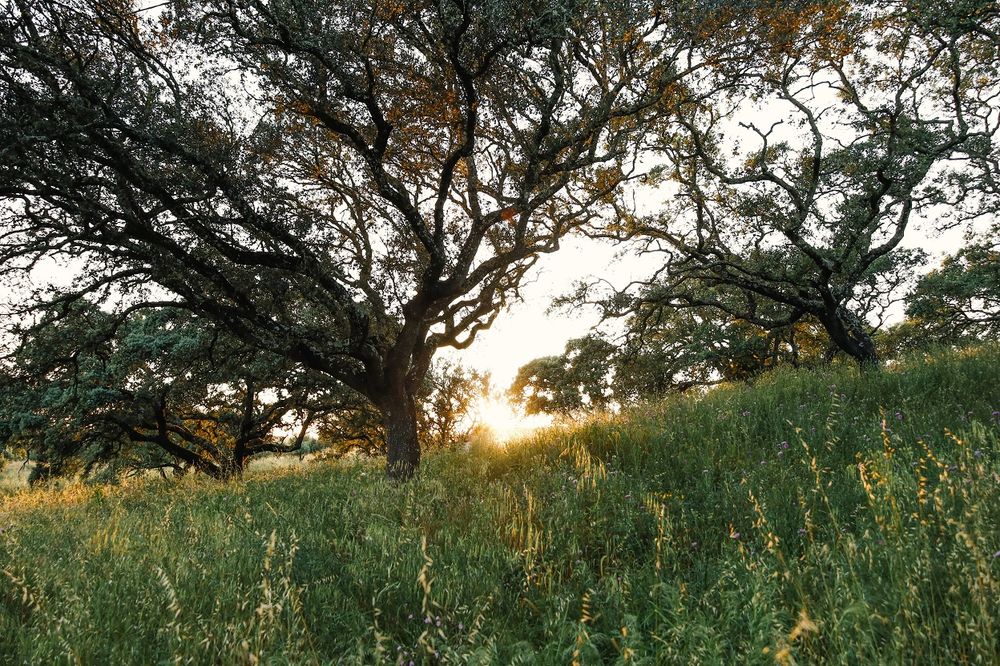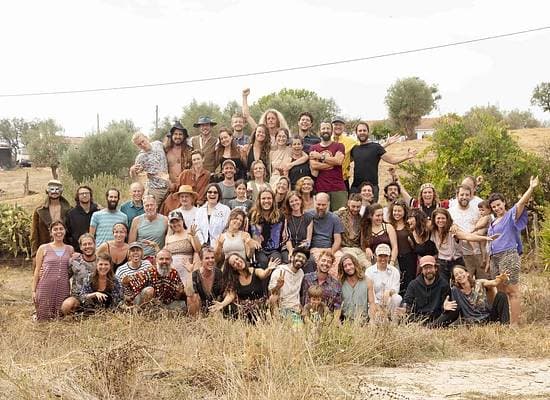Land regeneration
Growing a Forest: Reflections on Reforestation and Relationship with Land

Growing a Forest, Parenting a Forest
We did it! (Again)
345 more trees, rooted.
Growing a forest isn’t just about planting—it’s about something much deeper. Because forests, like life, are not born in a single moment. They emerge from a latency period, but to really tell this story, to tell it as the silent pioneers of a forest would tell it, it's only fair to tell it with respect to time.
How Much Time Does it Take Growing a Forest?
How long is the gestation of an infant? As humans, that's often our own offspring where we witness the reliance, the learning, the intimacy of relationships.
What about growing a forest from infancy? And all those parenting puzzles that come along with it—
And how to them understand without words?
This latency isn’t just biological. How does one form a relationship with something so vast, so intricate, that it transcends words and science? A forest is far more than trees. It’s a living consciousness composed of threads that extend far beneath the surface, exchanging nutrients, signals, and stories. These threads build relationships, manage ecosystems, and establish lifelines—activities so complex they eclipse our understanding.
Growing a Forest by Building a Consciousness Below Ground
When growing a forest, what’s missing from our attempts to describe this process? Plenty. Modern science has mapped parts of the mycelial web, yet its full story remains elusive. How do we measure its intelligence? Its emotional resonance? Mycelium doesn’t operate on human timelines or logic. Instead, it connects every root and rock, carrying a vast, silent wisdom that isn’t about understanding but about being.
This is where patience steps in. With each tree or bush we plant while growing a forest, we’re weaving into this unseen network, a web that’s already thriving beneath the surface. Some of our earlier plantings have soared to over three meters, while others quietly grow with modesty.
Our role? To nurture, provide resources, and trust the process. We’re not planting a forest as much as collaborating with an entity far older and wiser than we are. But… we can begin the facilitation processes for this intelligence to build, just as an adult and child. There’s deep beauty in the work of being with intentional land over compounded time. Applying, nourishing, observing, reflect - repeat where necessary.
From Latency to Legacy: Growing a Forest Over Time
When we first came to this particular spot in the land, the soil was dry, chalky and relatively infertile. It needed love.
Closing on 3 years of gorwing a forest with regenerative attention, it’s revived! Inches of humus cradle the roots, and water retention has drastically improved. Grasses and smaller plants organically appear annually. The greywater system and organic composting have transformed this hill into fertile ground.
With what the land itself revealed—an unfolding reflected in its existing resilience and potential. By observing the soil and what was thriving, we built upon the supportive interspecies pattern, selectively choosing species to complement the natural balance. Native oaks and medronho stood healthy as the true beneficiaries of this ecosystem, holding their ground so steadfastly that adding more wasn’t necessary. Instead, we focused on filling the gaps, creating a mosaic that weaves together rocky slopes, dry soils, and mycelium-rich patches.
Visit us and see first hand how we are growing a forest in the heart of Portugal.

Growing a Forest in Layers:
Lower Slopes
- North: In the wetter, fertile soils, ash, myrtle, and buckthorn were planted to embrace the diversity of conditions.
- Southwest: Patterns of ash, giesta, casuarina, and kurrajong interlace with native Iberian oak
- Southeast: Myrtle, hawthorn, and ash blend with Castanea as a climax species, leaving space for future aquatic restoration.
Upper Slopes
- North: Hawthorn, casuarina, and buckthorn act as anchors in the rocky, dry terrain, while kurrajong adds diversity to the eastern slope.
- Southwest: A hardy tapestry of rosemary, hawthorn, buckthorn, and carob thrives in the exposed, arid conditions.
- Southeast: Giesta, hawthorn, cypress and casuarina hold their ground in these higher zones.
Why These Choices Matter in Growing a Forest?
Growing a forest isn’t just planting—it’s co-creation. Each tree, shrub, and species plays a role in building an ecosystem. The carob fixes nitrogen; the hawthorn provides protection and shade for slower-growing species; the kurrajong breaks into rocky soils, preparing it for others to follow.
Beneath it all, mycelium works as the ultimate conductor, creating the connections that make this mosaic more than just a collection of plants. It’s a living system, interacting, exchanging, mapping itself out to instinctual influence.
The Unseen Forest
When we plant a tree, we imagine it growing tall, but rarely do we think about the sprawling root systems connecting to a web of fungi below. Yet this is where the true magic lies.
This forest isn’t just a collection of trees—it’s a vast, interconnected organism, building its own relationships and shaping its environment.
Forests teach us that latency isn’t a pause but a process. And patience? It’s not about waiting—it’s about listening.
Why Growing a Forest Is a Generational Gift?
Growing a forest is more than a regenerative act—it’s an intergenerational gift. The trees we plant now will serve communities, biodiversity, and planetary health far beyond our own lifetime. Each planting season deepens our understanding of resilience, of coexistence, and of the timeless relationships that hold ecosystems together.
How You Can Start Growing a Forest
Whether you have a plot of land or a patch of community soil, growing a forest can begin with small, intentional acts. Study your local environment. Talk to native plant specialists. Begin to observe and mirror nature’s patterns. Start with support species that prepare the soil. Let biodiversity lead your way.
And most of all: don’t rush. Forests don’t sprint—they stretch, they listen, and they become. So can you.
Here’s to baby forests, to the unseen, the unspeakable, and the unstoppable force of life itself. 🌱 All we are doing is giving it some guidance.
What to read next

Permaculture Course Portugal - A 14 Day Immersion
If you’ve been craving a deeper connection with the Earth, wanting to learn how to grow your own food, build real community, and live more in tune with nature, ...

Volunteer Opportunities & Burner Culture at TDF
Where Burner Culture and Regeneration MeetMost burns last a week. At Traditional Dream Factory, the burn stretches across an entire month, with 31 days of embod...

Permaculture Practices for Daily Life in Community
The intersection between permaculture practices and communityTo live in community is to enter into an ongoing conversation with the land, with others, and with ...

